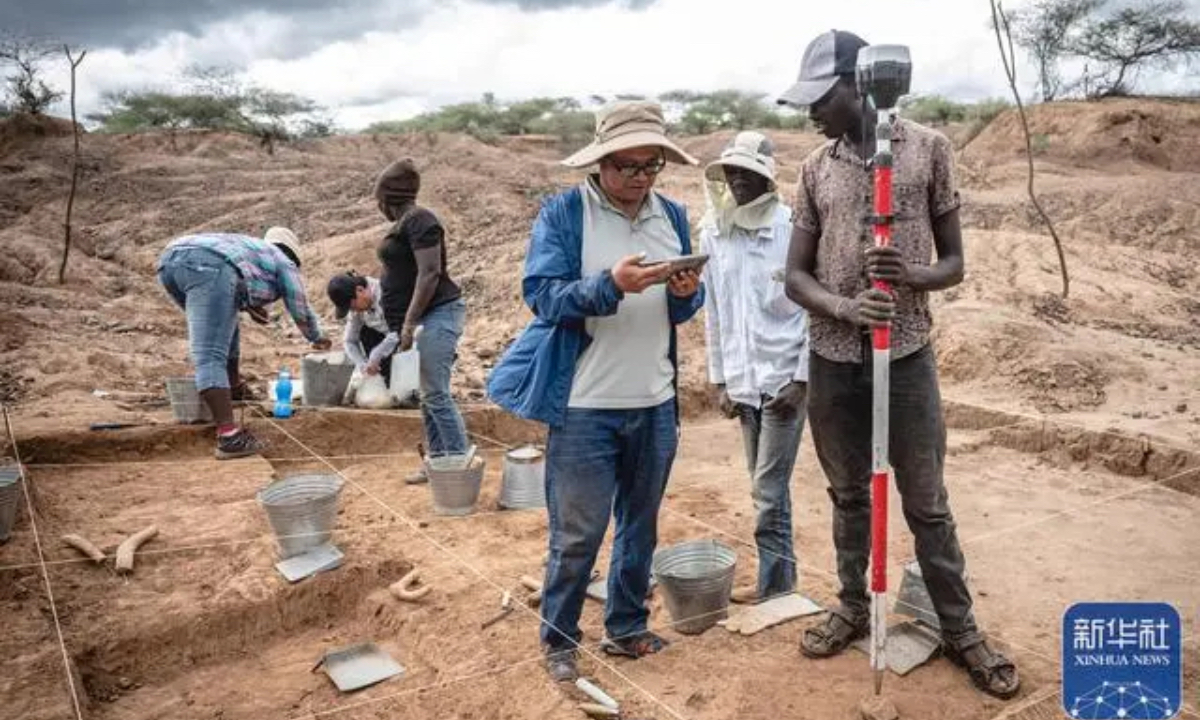
Photo: Xinhua News Agency
The Sino-Kenyan joint archaeological expedition at the Lake Bogoria site in Kenya announced the unearthing of 22 sites containing more than 2,000 stone artifacts, according to a report by the China News Service (CNS).
The findings, unveiled on Tuesday in Beijing, mark the only foreign archaeological discovery selected for recognition in China's 2023 archaeological highlights.
The Sino-Kenyan joint Paleolithic archaeological project was organized by the Henan Provincial Administration of Cultural Heritage, spanning from 2017 to 2019. The archaeological research at the Lake Bogoria Paleolithic site was a collaborative effort involving the local archaeological Henan Provincial Institute of Cultural Heritage and Archaeology, the Luoyang Municipal Institute of Archaeology, and a cooperation with the National Museums of Kenya.
In 2023, the archaeological team completed the excavation work at two locations within the Lake Bogoria site, discovering 22 sites within a 10-square-kilometer radius, which yielded over 2,000 stone artifacts, Zhao Qingpo, deputy researcher at the prehistoric research department of the Henan Provincial Institute of Cultural Relics and Archaeology, and on-site leader of the archaeological team, said.
The artifacts include tools from the early, middle, and late Paleolithic periods, such as chopping tools, hand axes, picks, Levallois technique-produced cores, blades, and scrapers.
At the second site, 407 stone artifacts were unearthed, primarily from the volcanic ash layer of the second stratum. Analysis suggests this site served as a small-scale tool manufacturing area with artifacts buried in situ.
The third site, discovered in 2019, exposed a substantial number of artifacts due to the rain wash. In 2023, over 1,300 artifacts were uncovered, most of which are Levallois technique-produced cores, flakes, and debris from the pre-core preparation process. Notably, a chopping tool was also found.
The Levallois technique is a pivotal milestone in the middle Paleolithic stone tool-making technology, Zhao said.
According to Zhao, the Middle Paleolithic era in Africa roughly began around 300,000 years ago and concluded about 50,000 years ago. The period from 300,000 to 200,000 years ago was a crucial time for the emergence of modern humans. In Africa, the Levallois technique may be closely associated with the origin of modern humans.
The discovery of debris in the stratigraphy indicates that the stone artifacts were originally buried in situ, rather than being transported to this location by external forces such as water flow.
The Lake Bogoria site is approximately 6 kilometers away from the earliest-known Kapthurin Formation sites with distinct Levallois technique features.
The artifacts unearthed at the third site provide crucial stratigraphic information and definitive Levallois technique characteristics, contributing significantly to the understanding of the origin of the Levallois technique, and the origins of modern humans, Zhao noted.
Global Times
URL: https://www.seeglobalnews.com/read-3131.html